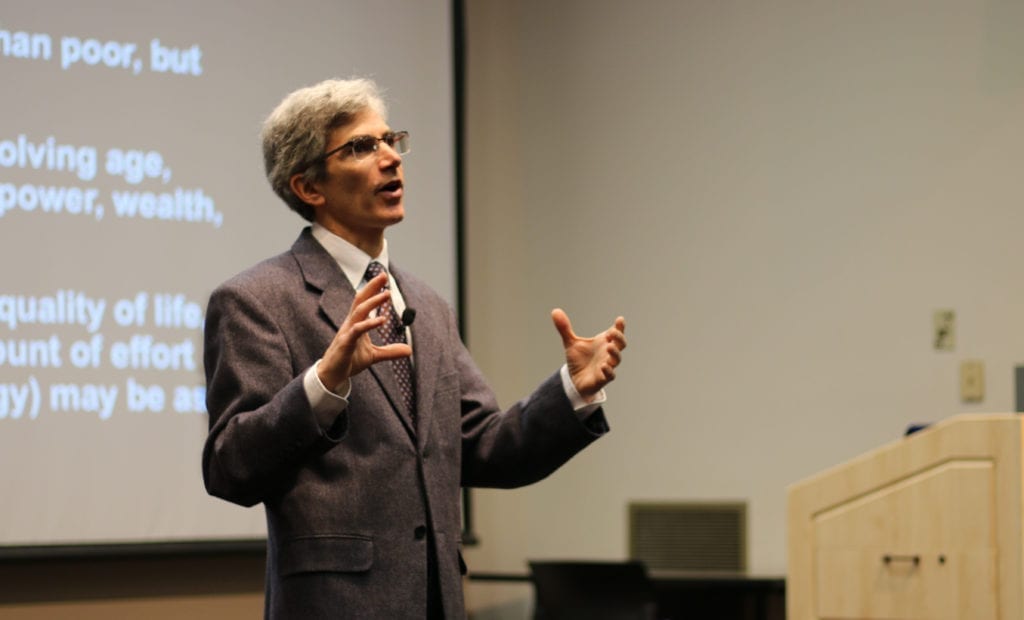Becker lecture discusses regional equality
David Stone explored the concept of regional inequality in North Africa based on teeth, burial mounds and other archaeological factors.

KNOXVILLE, TX - Jan. 26, 2017 - David Stone during his lecture covering ancient inequality in North Africa on Jan. 27, 2017. Photo By Bradley Blackwelder
David Stone, associate research scientist at the Kelsey Museum of Archaeology, found a way to get college students and seasoned scholars to relate personally to ancient society on Thursday, Jan. 26.
Thursday’s lecture, “Archaeology and Inequality: Methods and Measures in Ancient North Africa,” provided information about levels of regional equality discovered through Stone’s field excavations.
The lecture began with economic figures showing gross domestic product growth in the U.S., China and the United Kingdom last year. Stone pointed out that some data could be misleading because all three countries also experienced a jump in income inequality. The richest few became even richer, possibly skewing leading information related to economic growth.
Stone discussed archaeological findings made during his time spent in North Africa that evidenced inequality in its many forms. Numerous examples illustrated how everything from the size of a person’s burial mound, to what they ate, to the size of their house can potentially show scientists just how economically well off the people of ancient North Africa were.
Key signs allowed Stone to gain insight into the lives of those he holds to be the less fortunate. For example, those with fewer carbon traces in their teeth had plant-based diets. Those same individuals had smaller burial mounds or no grave markers at all. This lead scientists to believe that those subjects were of lower socioeconomic status than others who would have had money to purchase meat and fish or to hire labor to build larger burial mounds.
While interesting to think about, how does any of this information – some from as far back as the second century B.C. – relate to us today?
Payton Garland, a sophomore in industrial engineering, is not so sure that the economy has changed despite the centuries separating her from Stone’s subjects. “There is still a huge wage gap. Way back then is not that different from now.”
Finding connections between the past and present was a clear theme for many in attendance. Antonio Lopiano is in his third year of the Master’s program for Mediterranean Archaeology. “My main takeaway was that it is important to draw from multiple lines of evidence if you want to form cohesive conclusions about both ancient and modern society.”
Some students walked away from the lecture with a lot to consider.
“I don’t know as much as I thought,” business major William Trapnell said. “It was very eye opening… it’s not like you can just go and look in a book for this information. You have to be creative. You have to go in, make some assumptions, and find different ways to come up with answers.”
What do we do with those answers when we find them? According to Stone, a lot.
“There are different ways of studying inequality… and the world. Look at the range of incomes and in particular at how much inequality there is,” he said. “Then, also recognize that quality of life in different societies means different things. Quality of life to some people means having running water in your house. Maybe there are societies where that isn’t so important.“
Stone concluded with a piece of advice.
“At a time when there are calls to remove funding from humanities institutes, one of the things we have to develop better skills at is how to talk about what we’re doing in ways that apply to the rest of the world.”
Featured image by Bradley Blackwelder
Edited by McKenzie Manning

